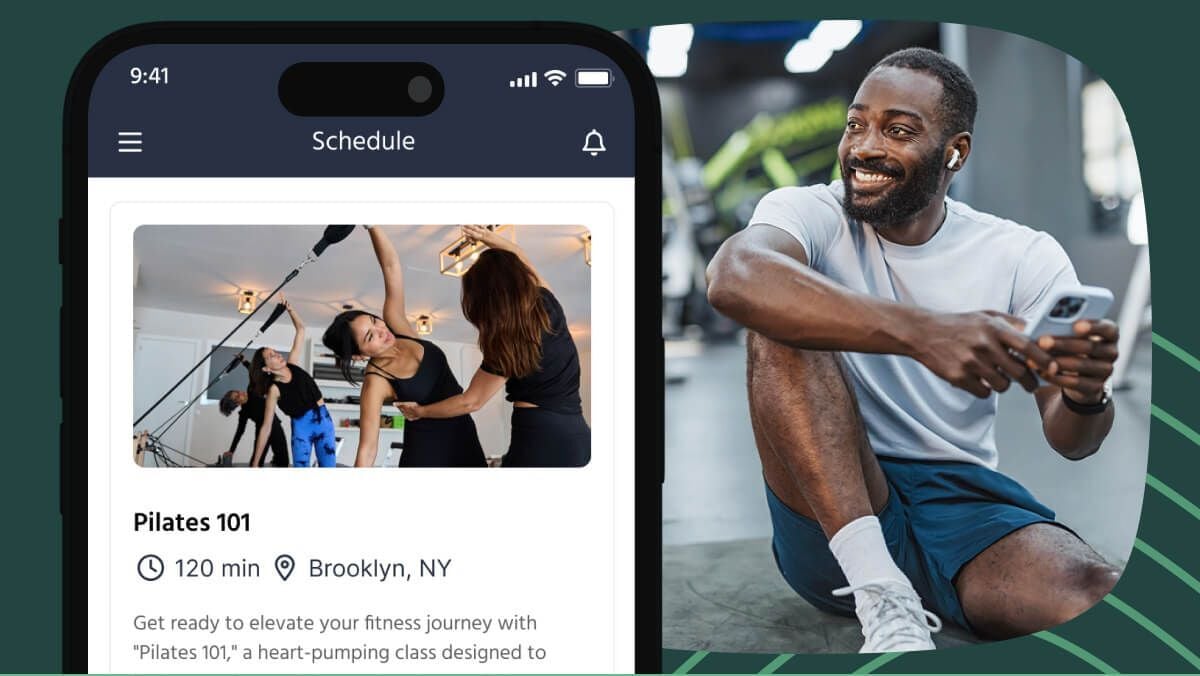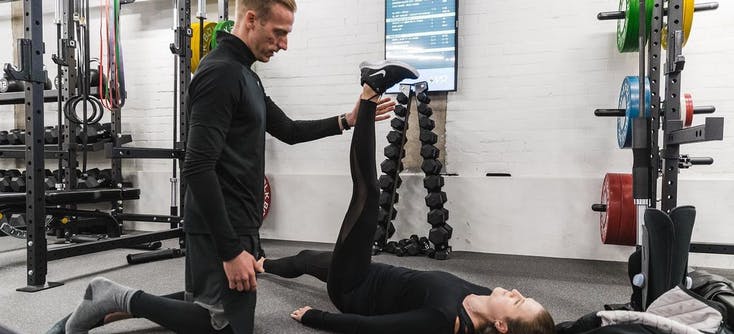A great personal trainer bio is a vital part of your fitness business. It's not just a list of your skills and experience.
It's your chance to connect with potential clients and show them what makes you different and passionate about fitness.
Your bio is often the first thing a potential client sees, so it needs to make a strong impression. It tells your story and shows how you can help them reach their fitness goals.
Your bio can make you stand out in the fitness world, where personal connections are everything.
It's not just about what you've done but how you can inspire and motivate others. A well-crafted bio can be a powerful tool to attract new clients and grow your business.
A strong bio goes beyond just getting noticed; it builds trust and starts the trainer-client relationship on the right foot. It's about creating a personal connection and showing clients you're committed to helping them succeed in their fitness journey.
Key takeaways
-
A personal trainer bio is more than just qualifications; it's a narrative that builds trust and connection with potential clients.
-
Effective personal trainer bios strike a balance between professionalism and personal touch, highlighting specificity in services and specialization.
-
Sharing your personal story and professional journey in your bio can make you relatable and approachable to clients.
-
Credentials and certifications are crucial for establishing trust and expertise in the fitness industry.
-
Putting clients at the center of your bio demonstrates your commitment to their success and helps build trust from the start of your trainer-client relationship.
Understanding the purpose of a personal trainer bio
The purpose of a personal trainer bio is to create a narrative that establishes trust and credibility with potential clients.
Instead of just listing qualifications, the bio should tell your story in a way that connects with clients and shows them you understand their needs.
A compelling bio can help form a bond with clients, making them feel confident and excited to work with you.
It's an opportunity to demonstrate that you offer personalized guidance and support beyond just technical fitness coaching.
Key components of an effective personal trainer bio
When crafting an effective personal trainer bio, it's essential to add key components like specificity in your specialization, and highlighting your credentials.
We'll share some of the best tips and essential elements that make your bio stand out, ensuring it resonates with potential clients and reflects your unique approach to fitness.
Specificity in services and specialization
Your unique skills are your biggest asset. Highlight your specialties, whether it's yoga, HIIT, or nutrition counseling.
Let clients know exactly what you can offer them, making it easier for them to see how you fit into their fitness journey.
Personal story and professional journey
Your journey is inspiring — share it. Your personal story and professional milestones make you more than just a trainer; they make you a mentor and motivator.
Let clients see the person behind the trainer, making you relatable and approachable.
Credentials and certifications
Your qualifications build trust. Listing your certifications and credentials reassures clients of your expertise and commitment to their fitness goals.
It's an essential part of establishing yourself as a professional in the fitness industry.
Client-centric approach
Put your clients at the heart of your bio. Show them that their goals and needs are your top priority.
This approach demonstrates your dedication to helping them succeed and creates a bond of trust from the start.
Writing strategies for personal trainer bios
If you are a personal trainer, it is essential to have effective strategies to write your personal trainer bios such as clear and concise writing and using the elevator pitch formula to help connect with your clients better.
We can help you create a standout bio that will quickly and efficiently introduce yourself.
You will also learn how to build trust through client feedback, highlight your unique qualities, and address any concerns your clients may have.
Clear and concise writing
Make every word in your bio count. Use clear and straightforward language to convey your skills and what sets you apart.
This is your chance to communicate effectively, showing potential clients why you're the right choice for them.
Using the elevator pitch formula
An elevator pitch for personal trainers is a brief, impactful summary that quickly communicates who you are, your specialty, and what sets you apart.
This concise introduction, vital in grabbing attention in short interactions, should include your name, specialization, fitness approach, and unique benefits you offer clients.
Practice is vital to making your pitch memorable and effective, ensuring you make a strong impression in just a few seconds.
Incorporating client testimonials
Client testimonials significantly boost the credibility of your bio. Including genuine, positive feedback from past clients showcases your effectiveness and reassures potential clients of your ability to deliver results.
These testimonials serve as proof of your success and commitment to client satisfaction.
Addressing client pain points and goals
Your bio should speak directly to client pain points and goals, showing an understanding of their needs and your ability to provide tailored solutions.
Ask key questions to understand client struggles and preferences, then position yourself as the solution in your bio, demonstrating your commitment to meeting their specific fitness objectives.
Showcasing unique qualities and strengths
Make your bio stand out by highlighting what makes you unique, such as your specific knowledge, experience, skills, or personal attributes.
This can attract clients looking for a trainer with your particular qualities and strengths, differentiating you from others in the field.
Anticipating and addressing skepticism
Tackle skepticism head-on by addressing common misconceptions about personal training in your bio.
This could include concerns about cost, quality of service, or the overall effectiveness of personal training. You can build trust and reassure potential clients of your value by proactively dispelling doubts.
Call to action for potential clients
End your bio with a clear call to action, guiding potential clients on the next steps, whether contacting you, signing up for a consultation, or booking a session.
A direct call to action can motivate clients to engage with your services, providing a clear path for them to follow.
Personal trainer bio examples
To give you an idea of how to craft your bio, here are some examples tailored to different styles and specialties:
Example 1: Strength and conditioning coach
I'm Alex Johnson, a passionate Strength and Conditioning Coach dedicated to helping athletes achieve their peak performance. With over a decade of experience and a background in sports science, I specialize in designing comprehensive training programs that enhance strength, agility, and endurance. My approach is data-driven, focusing on measurable improvements and personalized training. Let's unlock your true potential together.
Example 2: Yoga and wellness trainer
Hi, I'm Lisa Green, a Yoga and Wellness Trainer committed to bringing balance and harmony to your life. My journey began with a personal transformation through yoga, leading me to become a certified instructor. I blend traditional yoga with mindfulness practices, helping clients find inner peace and physical wellness. Join me on a journey to a healthier, more centered you.
Example 3: Nutrition-focused fitness trainer
Mark Thompson here, your guide to integrating fitness and nutrition for optimal health. As a Certified Personal Trainer and Nutritionist, I believe in the power of combining exercise with healthy eating. My programs are tailored to your unique dietary needs and fitness goals, ensuring a holistic approach to wellness. Transform your body and mind with a plan designed just for you.
Example 4: General fitness and weight loss expert
I'm Emily Davis, specializing in fitness programs for weight loss and general well-being. With a friendly, motivational approach, I help clients of all levels embark on their fitness journey. Whether it's shedding pounds, building muscle, or improving overall health, I'm here to support you every step of the way with personalized workouts and nutrition guidance.
Example 5: Rehabilitation and injury prevention specialist
I'm Chris Lee, a Rehabilitation and Injury Prevention Specialist dedicated to helping individuals recover and strengthen after injuries. With a background in physical therapy and a certification in corrective exercise, my focus is on safe, effective rehabilitation techniques. I work closely with clients to restore mobility, reduce pain, and prevent future injuries, tailoring each program to individual needs. Let's rebuild your strength and confidence together, safely and sustainably.
Adapting your bio for different platforms
Adapting your bio for different platforms like websites and social media is key to engaging with various audiences effectively.
Let's refine how you can tailor your bio across these platforms:
Websites
On your website, your bio should be comprehensive, detailing your training philosophy, methods, and range of services.
Here, you can elaborate on your approach to fitness coaching, incorporating elements like your training ethos or how you adapt programs to individual client needs.
Ensure your bio includes a clear call to action, such as inviting visitors to schedule a consultation or join a training program.
Social media
Social media bios should be catchy and to the point. Start with a compelling hook, like a unique aspect of your training approach or a brief, powerful statement about your fitness philosophy.
Use engaging language that reflects your personality, making your bio memorable and shareable. For example, Transforming lives, one workout at a time can effectively capture attention.
Professional Profiles
For platforms like LinkedIn, your bio should blend professionalism and personal touch. Here, you can provide more detail about your professional journey, highlighting milestones in your career.
Discuss your specialties and how they align with client goals, using a professional yet approachable tone.
Writing in the first person can foster a connection with your audience.
Across all platforms, the aim is to communicate your unique identity as a fitness professional.
By tailoring your bio to suit the style and audience of each platform, you maximize your impact, showcasing your expertise and connecting with potential clients in a meaningful way.
FAQs for personal trainer bio templates
What should be included in a personal trainer bio?
A personal trainer bio should include your name, qualifications, areas of specialization, a brief mention of your fitness philosophy or approach, a personal story or motivation if relevant, and contact information.
How long should my personal trainer bio be?
The length can vary depending on where it's being used. Generally, keep it concise yet informative. A couple of paragraphs are ideal for a website or professional profile, whereas a shorter, more direct bio is preferable for social media platforms.
Should my bio be written in the first or third person?
It depends on the context and your personal preference. A first-person POV can feel more personal and relatable, while a third person can appear more professional. Consider your audience and platform when deciding.
How often should I update my personal trainer bio?
Regular updates are important to ensure your bio reflects any new qualifications, experiences, or changes in your fitness philosophy. Reviewing and updating your bio annually, or after any significant professional development, is a good practice.
Can I use the same bio across all platforms?
While the core information will remain the same, it's advisable to tailor your bio slightly for different platforms to suit the specific audience and format. For example, your LinkedIn bio might be more detailed and professional, while your Instagram bio might be shorter and more casual.










